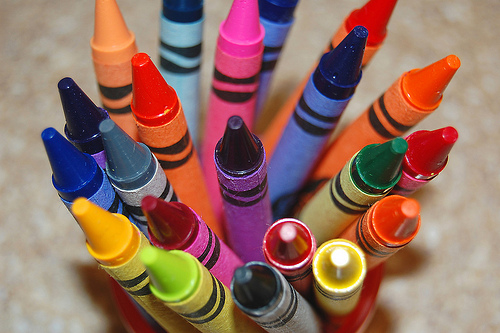Once, when I was about five, my mother tried convincing me to color a picture so she could get some housework done. She laid out a coloring book and a handful of bright crayons sure to tempt any little girl into 30 minutes of quiet, non-disruptive activity.
But I wasn’t tempted.
Eventually, my mother gave up on her work and sat at the table. “Hmmmm,” she murmured. She slid the coloring book closer. She paged through it, fascinated, and exclaimed over something I couldn’t see. I crept closer, wondering what could be so interesting, but she shifted in her chair, blocking my view. Then she chose a crayon and began to color.
I rounded the table and sat beside her. Her hand swished across the paper as she meticulously shaded her picture with long light strokes. My pictures never looked like that. I wanted to try too. I reached for a crayon. “I’m using those,” she said without looking up. “Just go ahead and do what you were doing, honey.”
I was crushed; how badly I wanted to color! Coloring was the only thing in the world that would make me happy! I sat in anguish until she finished her picture. Then she turned to me, smiled and said, “Do you want to color one for me?”
Of course I did.
Perspective is everything. Remember Mary Poppins’ “Spoonful of Sugar”? When writing begins to feel like a chore and you’ve lost your inspiration, try turning your perspective on its head. Here are a few tricks to get you started:
Limit your writing time. If you have six hours a day to write, block off three hours. If you have four hours, block off two. Force yourself to use the rest of the time doing laundry, running errands, paying bills, etc. You’ll spend that time wishing you were writing, and realize it’s not such a chore after all.
Change your space. If you write in your home office, move your laptop to the dining room. If you write at a coffee shop, try the library. Instead of playing classical music, switch to rock and roll. Different lighting, sounds, smells—these elicit a different response and turn what was routine into something new and interesting.
Picture your favorite writer at work. My mother infused mystery and longing into the act of coloring a picture because she was doing it instead of me. I was five; anything she did was worthy and important.
Now picture a writer you admire and imagine him at his desk, typing away or scrawling outlines for his next brilliant manuscript. He has the same tools you do: a keyboard, a pencil, a stack of paper. Imagination and the need to tell stories. Embody that spirit, and start writing.














Connect With Me